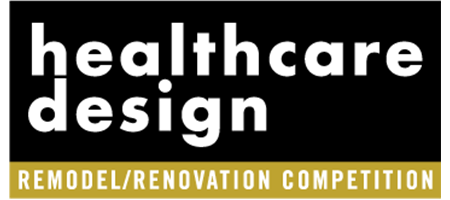
Wayne Barger (Headshot: Courtesy of SmithGroup)
Healthcare Design is kicking off its 2025 Healthcare Design Predictions series with Wayne Barger, vice president, director of health, at SmithGroup (Dallas).
Check out his thoughts on what opportunities and challenges are ahead for the industry over the next 12 months, including his expectations for more ambulatory facilities and merger activity and how baby boomers’ needs are impacting facility designs.
Healthcare Design: Where do you think the healthcare design industry will head in 2025?
Wayne Barger: I see a continuation of current trends: more ambulatory facilities and more mergers and acquisitions resulting in the consolidation and expansion of health systems.
HCD: How do you anticipate the aging baby boomer population will impact the industry?
Barger: No trend is driving healthcare demand more than the aging American population, which will exacerbate workforce shortages and the financial strain on Medicare and the overall healthcare system. It also means infrastructure and facility limitations for healthcare systems that are already struggling to keep up with increasing patient loads.
It’s not just a capacity issue, but baby boomer preferences and large wealth share have been influencing healthcare for a number of years: preferences for private rooms, hospitality-like facilities, and more choice.
HCD: Post-election, how might the regulatory environment change and what will that mean for our industry and the built environment?
Barger: That’s somewhat hard to predict without knowing if President Donald Trump’s recommendations for key posts will pass Senate confirmation, for example Robert F. Kennedy Jr. at the Department of Health and Human Services or Jay Bhattacharya at the National Institutes of Health. If they are confirmed, Kennedy’s hostility to “Big Pharma” seems the most obvious industry threat, but the impact on capital spending would likely be confined to drug companies and not health systems.
Kennedy’s focus on alleviating chronic disease through improvements in our food supply and encouraging other healthy habits could continue the trend of consumers taking more agency in their health and well-being, which tends to be a big driver for more innovation and choice in the healthcare-built environment.
HCD: Do you think the new administration’s policies will affect construction prices and labor—how? If so, what impact will that have on the healthcare design sector?
Barger: President Trump’s proposals for significant increases in tariffs and immigration crackdowns that reduce the labor pool are very inflationary and may exacerbate an inflation rate that seems to be bottoming and poised for another surge.
Tariffs on building materials or manufactured items will increase construction costs, potentially bringing the current building boom to a swift end.
HCD: Do you anticipate renovations to continue to outpace new construction in the coming year or is there another shift on your radar? Explain.
Barger: Yes, the economics of renovation will continue to be positive—along with the cost and sustainability benefits and optics of reusing buildings versus building new.
For more insights from industry leaders, read here.











